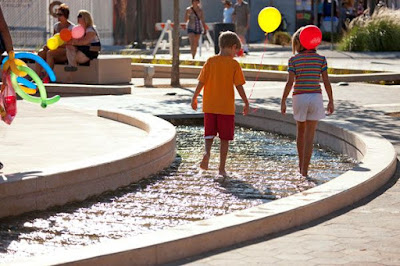
"Seven Planning Principles for Successful Community Design (1-7)

- THE GRID: Regardless of specific form and geometry, spaces should be laid out in a network of pathways to maximize interconnection.
- SMALL BLOCKS: Individual and collective spaces should be scaled down in such a way as to allow the most convenient access, with a priority always to the pedestrian.
- NO BACKS: Blank walls, limited use zones, and other inhospitable spaces should be avoided in order to promote a safe environment.
- ON FOOT: The experience of a place should be defined equally by the entry and approach as well as the arrival.
- TO DWELL: Sidewalk and corridor environments are as much for dwelling as they are for passage and should be places that encourage interaction, collaboration and restoration.
- MIXED UP: The right programmatic blend of uses and the way in which the functions interact should set the stage for a dynamic community environment.
- SIMPLIFY: Design should be clear, understandable and beautiful – especially public space in order to create a sense of comfort and harmony for the community.
















































